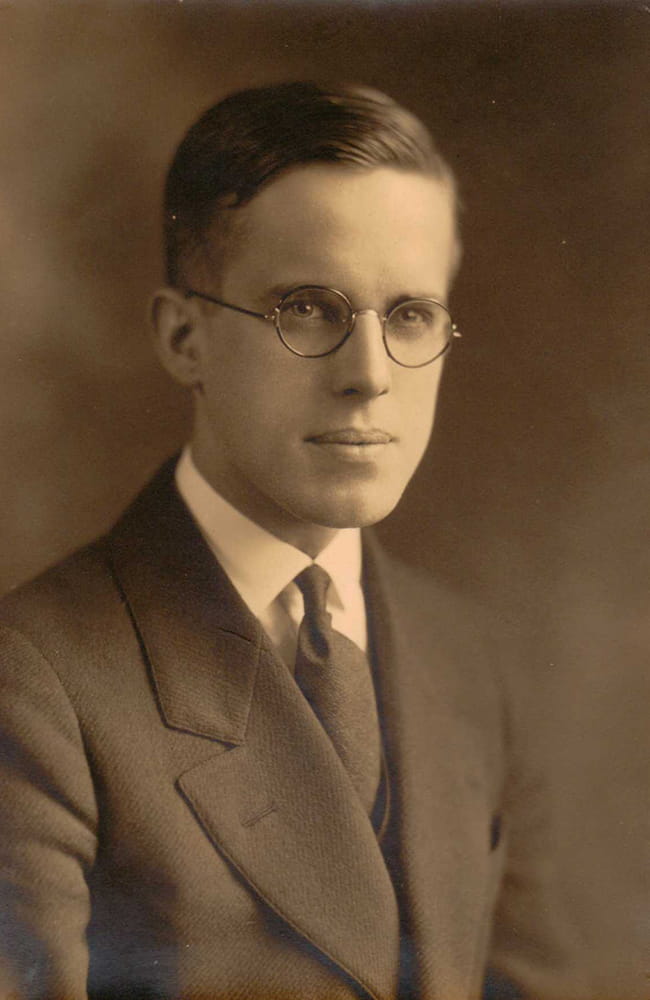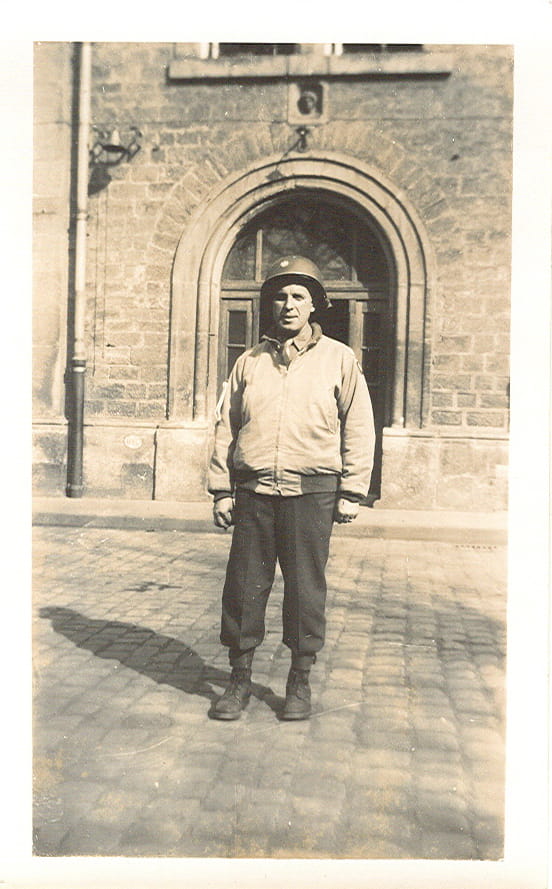Hidden Treasures: Storing the Life of Alumnus Bruce Sisler, MD

The Legacy Center Archives at the College of Medicine is used to receiving the photos, class notes, professional records and sometimes mementos of alumni from historic medical schools that grew into Drexel’s College of Medicine, including Hahnemann Medical College. But there’s never been a donation quite like the collection of Bruce Sisler, MD, (1901–79) who graduated from Hahnemann in 1926, because it documents the day-to-day life of a 20th century doctor to a level of detail beyond other alumni collections in the Legacy Center — and it’s still growing.
Since 2012, Robin Goza, Sisler’s great-niece, has been graciously shipping boxes of his possessions from Texas — about 15 or so boxes — that contain everything from his life. So far, she’s donated items ranging from school notebooks to innumerable letters both professional and personal to decades’ worth of various identification cards to years’ worth of private patient records and even a helmet he wore in World War II as a lieutenant colonel and surgeon in the Army.
So yes, there are boxes. Lots and lots of boxes. And all of them together contain a wealth of information to show who Sisler was, in different kinds of ways, and tell the story of his life.
Born in Pittsburgh, he attended the University of Pittsburgh as an undergraduate and attended Hahnemann Medical College for medical school. During his long and varied career, Sisler lived in Tennessee, Washington D.C., Pennsylvania, Florida, New York and Massachusetts while working for the U.S. Veterans Association (now the U.S. Department of Veterans Affairs) before and after serving in World War II, the U.S. Postal Service, the U.S. Department of Defense, the National Cancer Institute and in private practice. In 1923, he married Ethlyn Brown, and they were together for 56 years before she died in June 1979, less than three months before Sisler passed away in Houston.
And somehow, throughout the many career changes and cross-country moves, he managed to save and store an incredible amount of documents and other items that collectively tell the story of his life.

“We don’t have any other collection like this that documents almost every aspect of a person’s life at this level of detail,” said Matt Herbison, an archivist in the Legacy Center.
What’s also incredible is the fact that Sisler’s family saved — and stored in a storage unit — his possessions.
“That’s really unusual to have all of that information,” said Herbison. “I think the more I work with donors, the more I see that all it takes is one person, one break in the chain, for the stuff of history to end up in the trash. And that’s just how it is, and it’s understandable why it’s that way. If you’re not historically minded like [donor] Robin Goza and her family, you’re not going to hold onto this stuff like your family member did. We’ll get phone calls from people wanting to donate their family member’s diploma and we ask about what else they had from their career or school time, like diaries or photos, and sometimes it’s already thrown out. Or the reply is, ‘Oh, you’d be interested in that?’ which often leads to a happy outcome for all! Robin is atypical — she contacted us already knowing the historical value of this material that captures her great-uncle Bruce’s legacy.”
The range of potential researchable items in Sisler’s collection is vast, with a level of depth that is also rare. What has been included in Sisler’s collection and evaluated by Legacy Center archivists so far has high research value, a parameter that archivists use to evaluate the level of interest in a topic or a person and the amount of documentation in those areas.
Sometimes the level of interest could be high, as is the case with a famous doctor or an alum with historical importance, but the documentation could be low, with just a few papers or photographs. Sisler is the opposite — though his name isn’t easily recognizable to many, the things that he did or saw throughout his long career would be of interest to a lot of different types of researchers (like, for instance, those researching what it was like for surgeons to practice at a time when surgery was becoming professionalized in the middle of the 20th century or someone studying various medical trends in places he worked).

And, of course, the documentation level for his collection is very, very high. “Dr. Sisler had a really varied career. If you think about the different places he worked, it would allow you to understand different aspects of history,” said Herbison. “And you can also see, sometimes literally, his day-to-day life.”
Sisler alluded to as much in a short biographical record included in his collection that he wrote at age 75.
“There may be someone who might be interested in my genealogy or my daily occupational activities, for my whole life has seemed to be characterized by changes in many aspects — and at fairly frequent intervals for both short and extended periods of time,” he wrote. “No doubt I have wasted many opportunities which would have given me a fairly secure place in the passing of time. However, I have always felt that comfort and enjoyment in whatever I selected to do were large factors in that selection. To my great satisfaction, I have been able to be of assistance to many who have needed assistance — and that has given me more satisfaction than any other reward — including financial reward.”
This story was published in the winter 2018 issue of Drexel Quarterly.In This Article
Drexel News is produced by
University Marketing and Communications.

